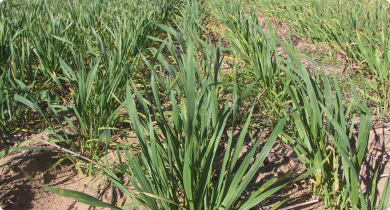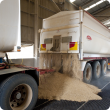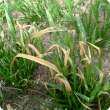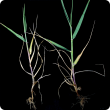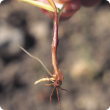Wheat
Wheat production accounts for 65% of total cereal production in Western Australia with about ten million tonnes generated annually in a rain-fed system across four million hectares of land.
About 95% of WA wheat is exported - predominantly to Asia and the Middle East - generating $2-5 billion in annual export earnings for the state.
Despite a decline in annual rainfall, the improvement in agronomic practices and development of new premium wheat varieties have enabled an increase in WA wheat yield over the past 30 years at a rate higher than world average.
The Department of Primary Industries and Regional Development has a strong research, development and extension focus on wheat production through its long history in wheat breeding - now privatised through Intergrain - and the development of wheat variety management packages for the state’s grain production zones.
Articles
Pages
Filter by search
Filter by topic
- (-) Remove Oats filter Oats
- Barley (19) Apply Barley filter
- Pests, weeds & diseases (13) Apply Pests, weeds & diseases filter
- Diseases (11) Apply Diseases filter
- Crop diseases (8) Apply Crop diseases filter
- Canola (8) Apply Canola filter
- Control methods (7) Apply Control methods filter
- Lupins (7) Apply Lupins filter
- Pulses (6) Apply Pulses filter
- Grains research & development (6) Apply Grains research & development filter
- Fungi (6) Apply Fungi filter
- Pests (5) Apply Pests filter
- Chemicals (5) Apply Chemicals filter
- Weeds (3) Apply Weeds filter
- Production & postharvest (3) Apply Production & postharvest filter
- Nematodes (3) Apply Nematodes filter
- Crop weeds (3) Apply Crop weeds filter
- Storage (2) Apply Storage filter
- Viruses & virus-like (2) Apply Viruses & virus-like filter
- Postharvest (2) Apply Postharvest filter
- Mechanical, physical and cultural (2) Apply Mechanical, physical and cultural filter
- Fungicides (2) Apply Fungicides filter
- Grains Research & Development (2) Apply Grains Research & Development filter
- Pest insects (1) Apply Pest insects filter
- Pastures (1) Apply Pastures filter
- Plant biosecurity (1) Apply Plant biosecurity filter
- Soil acidity (1) Apply Soil acidity filter
- Soils (1) Apply Soils filter
- Soil nutrients (1) Apply Soil nutrients filter
- Pasture management (1) Apply Pasture management filter
- Plant nutrition (1) Apply Plant nutrition filter
- Investment attraction (1) Apply Investment attraction filter
- Biosecurity & quarantine (1) Apply Biosecurity & quarantine filter
- Biosecurity (1) Apply Biosecurity filter
- Bacteria (1) Apply Bacteria filter
- Climate, land & water (1) Apply Climate, land & water filter
- Emergency response (1) Apply Emergency response filter
- Herbicides (1) Apply Herbicides filter
- Food, export & investment (1) Apply Food, export & investment filter
- Managing soils (1) Apply Managing soils filter


